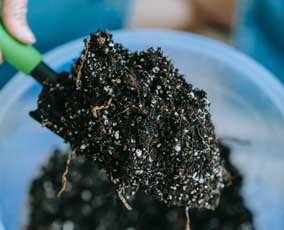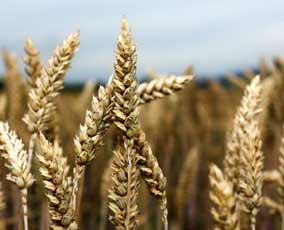Lower Costs. Increase Yields.
 Fertilizers approved by Ecocert.
Fertilizers approved by Ecocert.
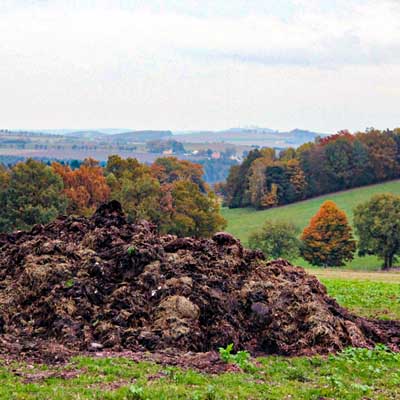

Reducing Chemical Footprint
Reducing Our Chemical Footprint
The integrated nutrient management system is an alternative and is characterized by reduced input of chemical fertilizers and combined use of chemical fertilizers with organic materials such as animal manures, crop residues, green manures, composts and biological combinations.
Management systems that rely on organic inputs as plant nutrient sources have different dynamics of nutrient availability from those involving the use of chemical fertilizers. For sustainable crop production, integrated use of chemical and organic fertilizer has proven to be the most beneficial. They just perform better.
 The Problem With Artificial Fertilizers
The Problem With Artificial Fertilizers
- Artificial fertilizers lose anything from 40%-60% Nitrogen and 40%-60% Potassium and 30% Phosphate through volatilization, fixation and leaching. They are thus unavailable for plant uptake.
- We have been programmed to always replenish NPK in the soils with Chemical fertilizers.
- We have been taught that to achieve 12t/ha on maize it means we have to replace the exact amount of NPK we took out of the soil.
- If you have a healthy soil this is not the case, the soil and microbes will do it for you.
A question to ask is why are we using such high N basal fertilizers? Most plants require N much later in their growth period.
 The Problem With MOP
The Problem With MOP
- MOP is not allowed to be used in Organic farming, and for good reason.
- MOP (KCL, Potassium Chloride) is a source of potassium.
- Another source of potassium is Sulphate of Potash, SOP.
- MOP, however, has much higher concentrations of chlorides/salts (45 times the amount compared to SOP), but because it is far cheaper than the SOP, most blenders use this in their fertilizers to be more competitive.
- This means that you are adding more salt to already high levels of salt for the sake of a cheap fertilizer. This will ultimately lead to long term soil degradation and declining yields.
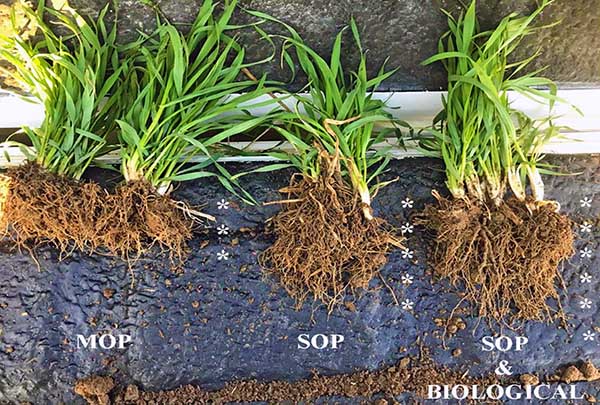
The Key To Healthy Soils
As any farmer would tell you, healthy soil will consistently produce more yield than poor soil. To try and increase the production from poor soil to match that of healthy soil requires large amounts of fertilizer which is expensive.
For every 1% increase in organic matter per hectare:- 22-29 Kg of Nitrogen are available every year
- 5-7 Kg of Phosphate is available every year
- 2-3 Kg of Sulphur is available every year
- 234,000 Liters of available water
This means less irrigation costs which adds profit to the end product.
 Benefits Of Healthy Soils:
Benefits Of Healthy Soils:
- Saves farmers money – since reducing or eliminating tillage means fewer passes over fields, and healthy soils use inputs like water and nutrients more efficiently, production costs are lower. Less inputs are required and therefore less exposure to detrimental growing conditions and economic variants.
- Boosts production – plants thrive because more organic matter and soil organisms improve soil structure, aeration, water retention, drainage, and nutrient availability.
- Protects against drought – healthy soil has greater water infiltration and holding capacity, which means more water is available to plants when they need it, like during periods of drought.
- Safeguards resources – runoff that causes flooding or carries nutrients and pesticides into lakes, rivers, and streams is reduced. There is less leaching into groundwater. Fewer trips across fields with farm machinery mean less fuel used and fewer emissions to harm air quality.
 Advantages Of Organic Fertilizers:
Advantages Of Organic Fertilizers:
- The nutrient supply is more balanced, which helps to keep plants healthy.
- The soil biological activity is enhanced, which improves nutrient mobilization from organic and chemical sources and decomposition of toxic substances.
- Colonization of mycorrhizae is enhanced, which improves P supply.
- Root growth is enhanced due to better soil structure.
- Organic matter content of the soil is increased, therefore improving the exchange capacity of nutrients, increasing soil water retention, promoting soil aggregates and buffering the soil against acidity, alkalinity, salinity, pesticides and toxic heavy metals.
- Nutrients is released slowly and contribute to the residual pool of organic N and P in the soil, reducing N leaching loss and P fixation; they can also supply micronutrients.
- Food is supplied that encourage the growth of beneficial micro-organisms and earthworms.
- Certain plant diseases, soil-borne diseases and parasites are suppressed.
Advantages Of Our Organically-Enhanced Fertilizers:
Three things differentiate Great River Group's blended fertilizers as compared to straight chemical fertilizers:- The product is built around our organic granules for increased utilization of the chemical fertilizer portion
- No fillers are used.
- The mix contains a biological as well.
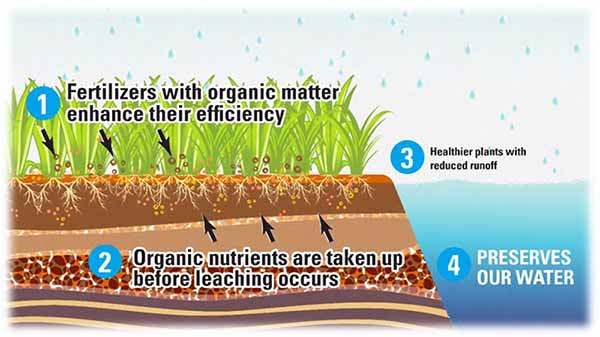
Bio Fertilizer
A bio-fertilizer is defined as a substance which contains living micro-organisms which, when applied to seed, plant surfaces, or soil, colonizes the rhizosphere and promotes growth by increasing the supply or availability of primary nutrients to the host plant. Bio-fertilizers add nutrients through the natural processes of nitrogen fixation, solubilizing phosphorus, and stimulating plant growth through the synthesis of growth-promoting substances.
Calkonutrium®: a végétal premix rich in sugar, micro-elements and amino-acids, which guarantees the strong soil inoculation of the microbiological complex and has a huge biological stimulation of the plant.
 Advantages of Bio Fertilizers
Advantages of Bio Fertilizers
- Since a Bio-fertilizer is technically living, it can symbiotically associate with plant roots. Involved micro-organisms could readily and safely convert complex organic material into simple compounds, so that plants can assimilate those nutrients easily.
- Micro-organisms produce a symbiotic function to cause improvements to the fertility of soil.
- It is more cost-effective relative to chemical fertilizers.
- It also provides protection against drought and some soil-borne diseases.
- It increases crop yield by 20-30% by replacing chemical nitrogen and phosphorus by 25% and thus stimulating plant growth without altering the physical and chemical characteristics of the Soil.
Lower costs. Increase yields. Making a difference in the future and sustainability of South Africa’s crop production and farmers’ profitability.



